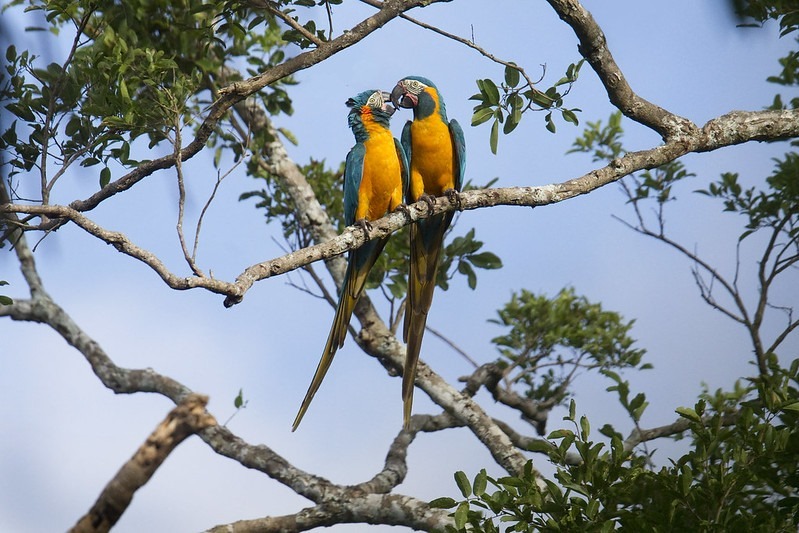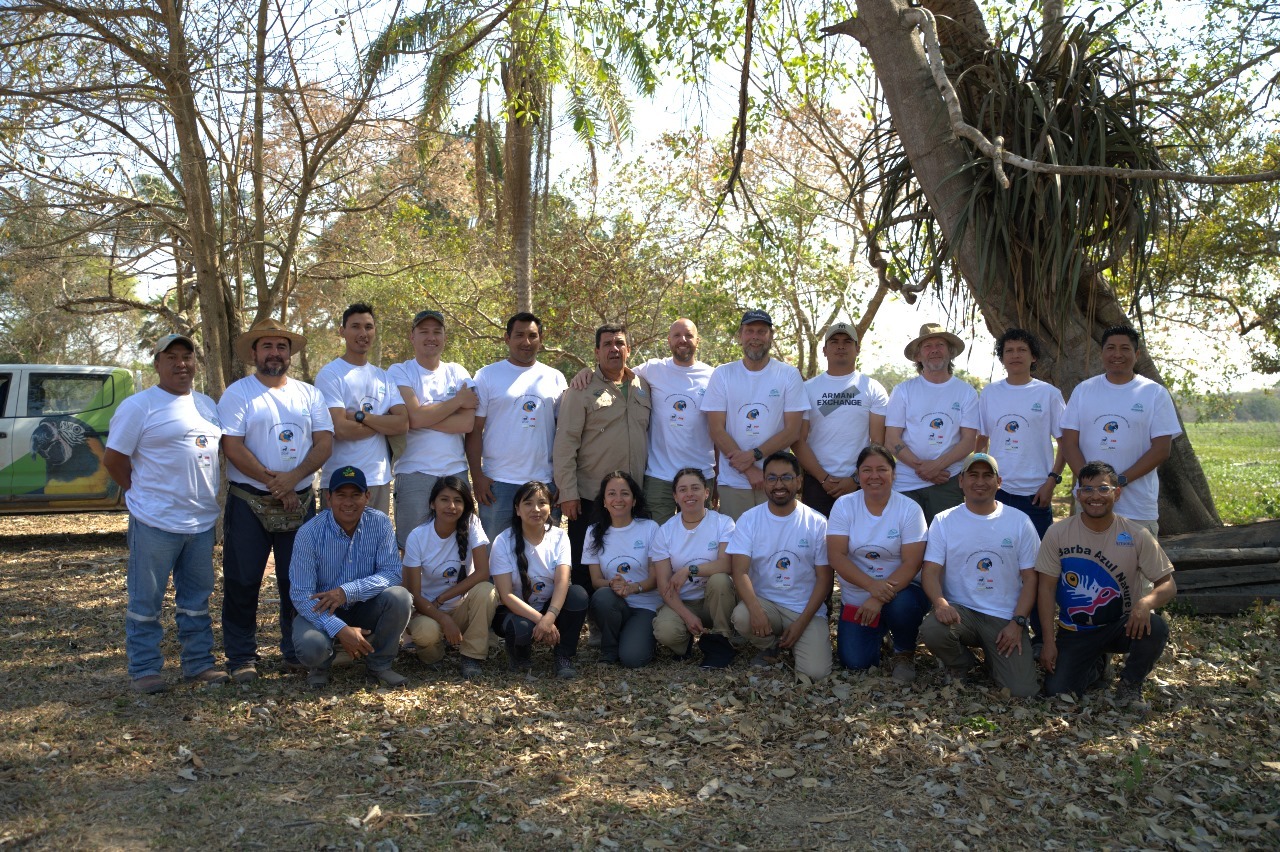Cover photo: Census team gathered at Laney Rickman Reserve before starting the Second Blue-throated Macaw Census.
Ten years after the first population estimate, the second census of the Blue-throated Macaw (Ara glaucogularis), an endemic species of Bolivia listed as Critically Endangered, has begun. This census is essential to determine the current population across the species’ entire range and to assess the effectiveness of conservation actions implemented over the past decade.
Following a theoretical and practical training session held this past weekend at the Laney Rickman Reserve, six teams of field researchers set out today to six different zones within the three subpopulations of the Blue-throated Macaw to begin fieldwork. The activity is led by Asociación Armonía, with support from the Zoological Society for the Conservation of Species and Populations (Ziel der Zoologischen Gesellschaft für Arten und Populationsschutz – ZGAP), the Mohamed Bin Zayed Species Conservation Fund, and Givskud Zoo – Zootopia.
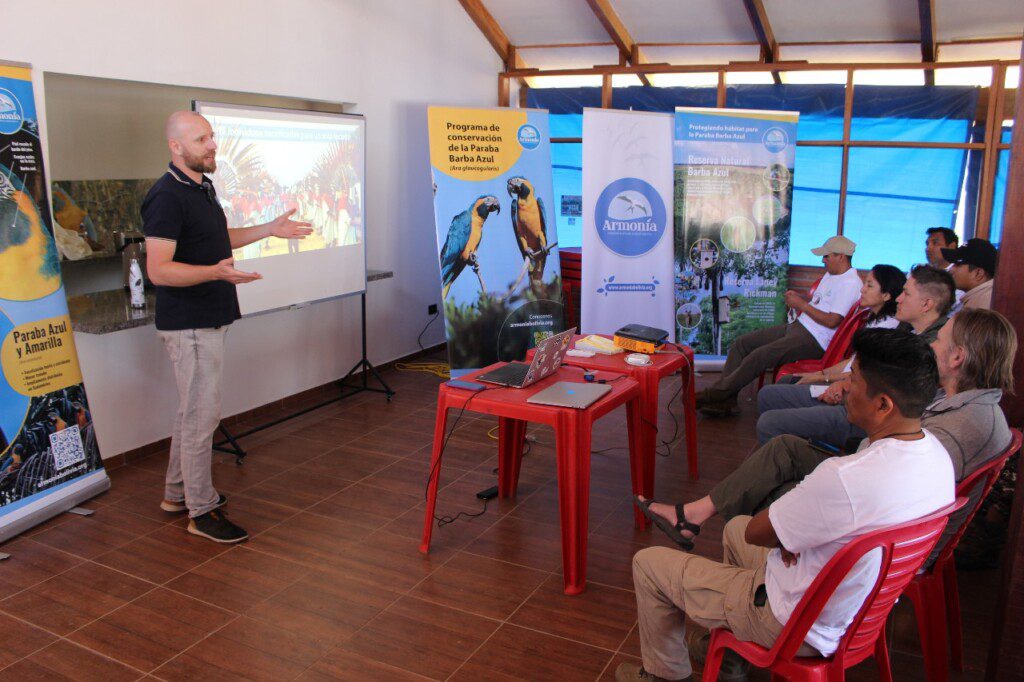

Photo: Census workers receive theoretical training at Laney Rickman Reserve before heading into the field for the Second National Census of the Blue-throated Macaw.
The first census, conducted in 2015 under the leadership of then scientific coordinator of Asociación Armonía, Sebastian Herzog, estimated a population of between 315 and 450 individuals. Ten years later, the new results will indicate whether the population has increased, remained stable, or requires additional conservation measures.
“With our monitoring work in the Barba Azul Natural Reserve and the success of the Nest Box Program at the Laney Rickman Reserve, we estimate that the population has increased. Now we need solid data to confirm this trend and guide future conservation actions,” said Tjalle Boorsma, Director of Conservation Programs at Armonía.
In 2025, the Nest Box Program reached a milestone with 19 chicks successfully fledging, bringing the total number of fledglings since 2005 to 164. About a quarter of the current population—estimated at around 500 individuals—is believed to have hatched in these artificial structures, with adults returning years later to breed. At the same time, weekly monitoring at the Barba Azul Natural Reserve recorded up to 228 macaws at a single roost, a record number that supports expectations of population growth.
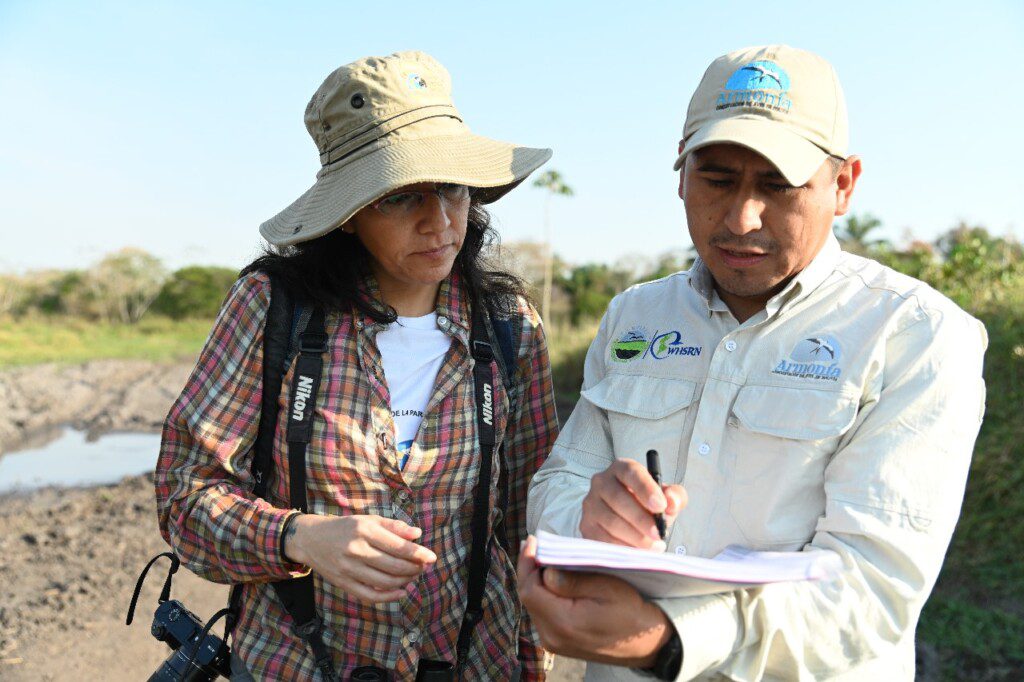

Mariana Villegas, Armonía’s Science Coordinator, explained that the methodology includes line transects, roost counts, and feather collection for genetic studies. “This approach will allow us to obtain more accurate estimates of abundance and population density,” she said.
One of the main challenges is distinguishing the Blue-throated Macaw (Ara glaucogularis) from the Blue-and-yellow Macaw (Ara ararauna). During training, teams practiced identifying key features such as the pink skin near the beak and blue facial stripes, as well as differences in vocalizations and flight patterns.
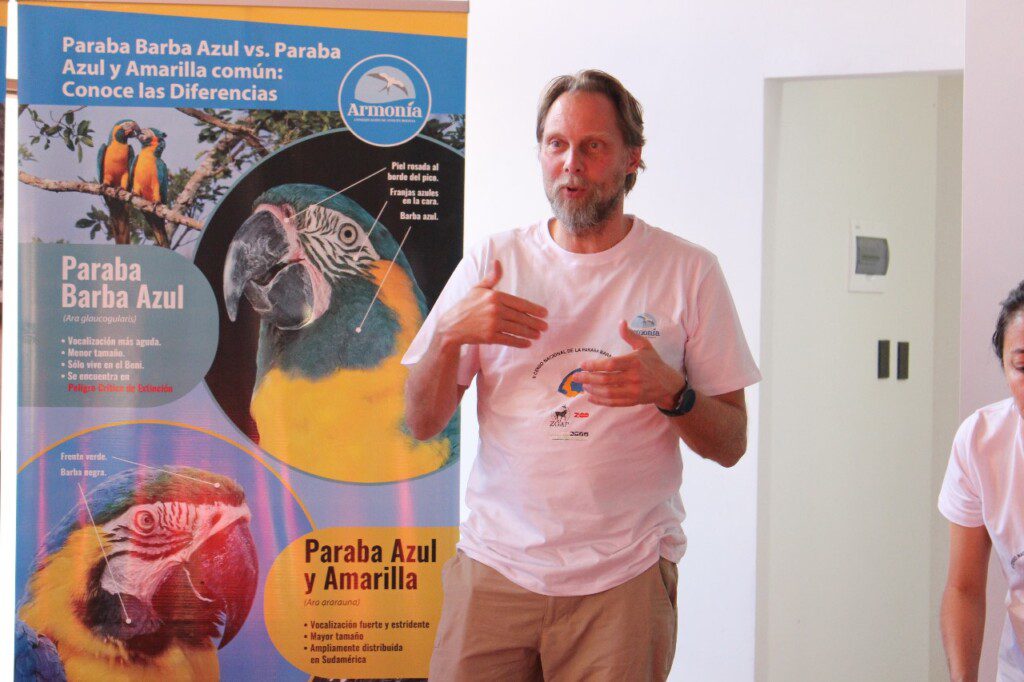

Photo: Experiences from the First Blue-throated Macaw Census conducted in 2015 were shared during the event.
For Sebastian Herzog, now Director of Protected Areas at Audubon, the census also has a human dimension: “These preparatory workshops are essential to refine the methodology and build team confidence. After a decade of conservation efforts, we are hopeful of reaching estimates close to 600 individuals.”
With this second census, Bolivia reaffirms its commitment to conserving one of its most emblematic and range-restricted species. Results are expected in the coming months and will guide future actions to ensure the survival of the Blue-throated Macaw in the Llanos de Moxos.
